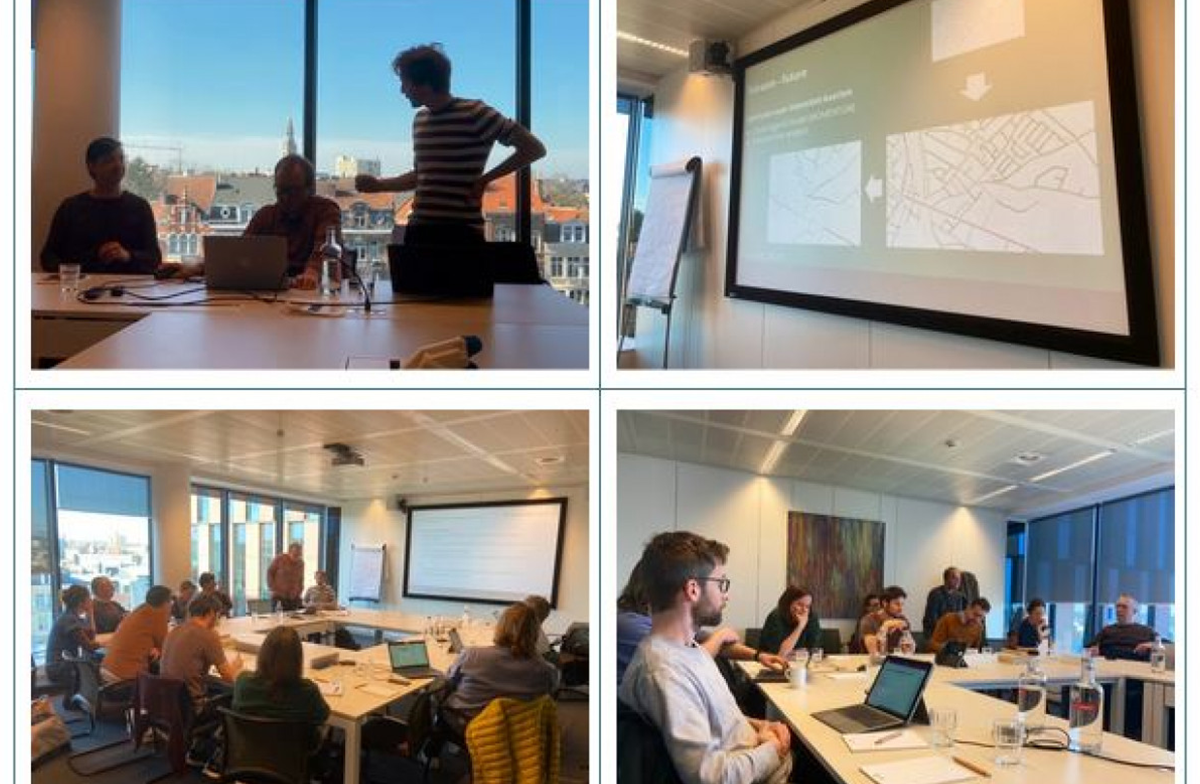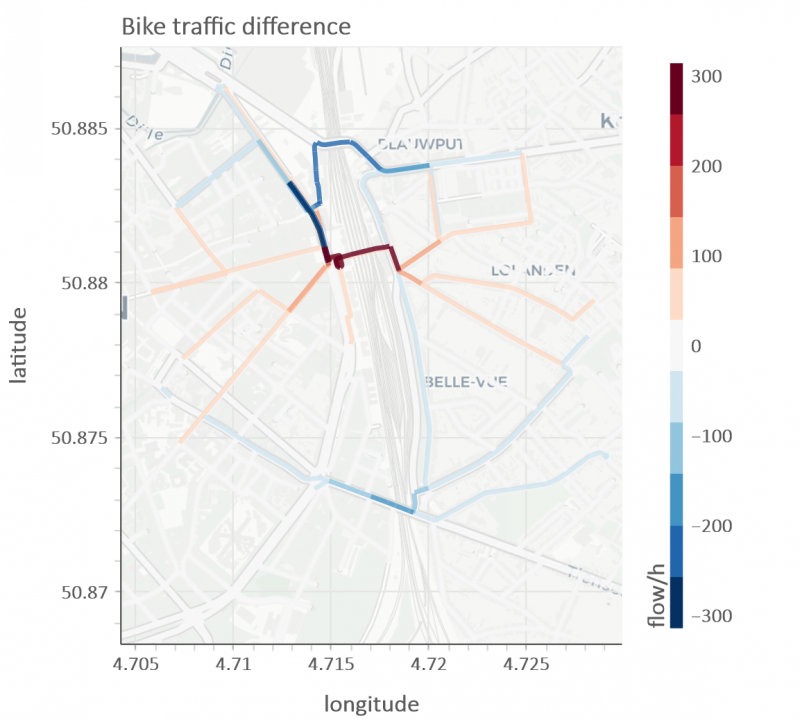Traffic model with Telraam data
Traffic model • Written by Wouter Florizoone on 15 April 2022

On Friday 11 March 2022, our colleagues of Transport & Mobility Leuven (TML) organised together with Telraam (Rear Window) and the City of Leuven an interactive workshop on the results of the European MOMENTUM project that just ended.
The aim was to interactively share the learned lessons, the developed tools and the traffic model from the MOMENTUM project with some mobility experts from cities, municipalities and intermunicipalities.
Going back in time, the raison d'être of the MOMENTUM project was the development of new data analysis techniques, traffic models and policy support tools capable of estimating the impact of different transport modes on urban mobility. Tools that thus help cities to design policy measures to fully exploit the potential of mobility solutions such as shared bicycles or shared cars.
The developed tools were tested by means of a number of case studies in four European cities that differ from each other in terms of size, morphology, environment, socio-economic and cultural factors, and policy. These are Madrid, Leuven, Regensburg (Germany) and Thessaloniki.
In the workshop, our colleague Kris Vanherle started with an explanation of Telraam, the power of open data and the application possibilities when a fine network of measuring points is active. The scaling up to intensity maps and the potential for generating selected-link analyses were discussed. The next step, as it were, when a fine-meshed network of counting frames is active for a long time, and thus applicable for the pilot network in Kessel-Lo.
Kris also gave a first preview of the new Telraam sensor that is currently in test phase. This sensor will be easier to install, will be able to count more transport means and will also allow night counting. We expect the sensor in the second half of 2022.
Next, Rodric Frederix (TML) explained the toolkit and zoomed in on the traffic model for Leuven, which was developed using a broad set of data sources: traffic indicators from the Flemish Traffic Centre, Telraam data, OpenStreetMap, the General Transit Feed Specification (GTFS) or public transport timetable with geographical information (see example STIB-MIVB), information from the municipal and city monitor of the Flemish government and the strategic traffic models version 4.2.1.
The combination of these data sources was "fused" in function of the traffic model and the result is a finely meshed network with information on traffic flows for all roads for the 5 most important modes (pedestrian, bicycle, car, freight and public transport) where the underlying relationships can be visualised in a simple and accessible way. Readable for a mobility official, but also for other services and policy makers. The traffic model shows results in terms of origin-destination, travel times and choice of mode, among other things.

Finally, Eli Nomes (City of Leuven) explained how Leuven started working with this traffic model. Three use cases were used, related to current urban projects:
- A basic traffic model with a high level of detail on the local level, to be used for the preparation of the new mobility plan for Kessel-Lo;
- Tools for estimating the impact of the introduction of Mobipunten (with shared bicycles and cars) on car ownership, occupation of public space and car use.
- And as a third use case, the impact of the plans for Regionet on modal shift and local liveability.
The key question is: "can the models and tools developed in the project make a direct difference in the development and application of the mobility policy in Leuven?
The answer was a resounding "yes", which was demonstrated by means of various cases at a detailed level.
After the explanations, a fascinating reflection and exchange about the results showed up. The participants agreed that the developed traffic model enables a quick, more transparent, more sustainable and low-threshold follow-up of the mobility policy. A must for every mobility officer !
NOTE :
- Would you like to know more about MOMENTUM and the developed traffic model? Contact our TML colleague Rodric Frederix.
- Would you like to know more about the new Telraam sensor? Then follow our digital "sneak peek" on Friday 10 June '22. All info can be found here.